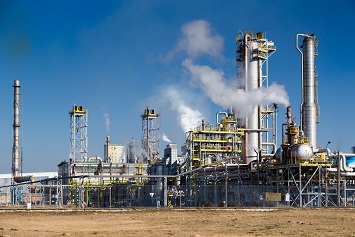Two recent Clean Air Act (CAA) settlements—one in Iowa and the other in Kansas—serve as a reminder for companies to review their risk management plans (RMPs) to ensure compliance with the EPA’s Chemical Accident Prevention requirements.
An agricultural co-op, which owns a facility in Kansas, paid civil penalties totaling $19,999 and agreed to spend $25,569 to purchase additional safety equipment for three local fire departments. An agricultural supply company that owns two facilities in Iowa paid $37,063 to settle alleged CAA violations. As part of the settlement agreements, both companies brought their facilities into compliance with CAA requirements.
The companies triggered EPA inspections due to the accidental release of anhydrous ammonia resulting in employee injuries. “EPA inspections determined that the companies failed to design their processes for handling anhydrous ammonia in compliance with good engineering practices, and failed to meet other requirements intended to ensure adequate measures are in place to prevent and respond to an accidental release from the facilities,” the EPA said.
Each location stores more than “10,000 pounds of anhydrous ammonia, triggering mandated compliance with the EPA’s Risk Management Program regulations intended to protect communities from accidental releases of certain toxic or flammable substances,” the EPA said.
The Agency has found that many regulated facilities are not adequately managing the risks they pose or ensuring the safety of their facilities in a way that is sufficient to protect surrounding communities.
One of the worst accidents involving anhydrous ammonia occurred on April 17, 2013, in an explosion at a fertilizer plant in West, Texas. This accident led to questions about the oversight of agricultural fertilizers. The explosion decimated a 4-block area around the plant; killed 15 people; injured more than 200; and destroyed a school, an apartment complex, and a nursing home. The reverberation was felt as far as 50 miles away and was compared to a 2.1-magnitude earthquake.
RMP Requirements
The goal of an RMP is to prevent chemical accidents at locations storing more than threshold amounts of certain harmful chemicals. Companies subject to the rule must revise and resubmit RMPs to the EPA every 5 years. The plans should:
- Detail the impact of potential chemical accidents at the facility.
- Outline specific accident prevention measures in place.
- Define precise actions to be taken in the event of a chemical accident.
The plans must sufficiently provide:
- An assessment of potential impacts of an accidental chemical release;
- A 5-year history of accidents at the facility;
- A detailed assessment of “worst-case and alternative accidental releases”;
- Prevention protocols, such as employee training, safety monitoring equipment, equipment maintenance schedules, and specific safety precautions; and
- A response plan in the event of an accident, such as healthcare protocols; employee accident-response training; and notification procedures for alerting first responders, regulatory agencies, and the public.
Anhydrous ammonia is a gas used in fertilizer production. Commonly reported Occupational Safety and Health Administration (OSHA) violations related to anhydrous ammonia include failure to provide leak detection equipment, no emergency response plans, inadequate employee training, and insufficient machine guarding.
“… violations that are of particular concern to the [EPA] are those related directly to the operation and maintenance of critical equipment, like failing to perform safety inspections or ensure its mechanical integrity,” said an EPA spokesperson via e-mail. “In addition, EPA works to ensure that employees operating key equipment have been properly trained and are aware of the hazards they are dealing with. We also focus on determining whether a facility has sufficiently identified the risks associated with operating and have established an accident response program, should a release occur.”
The EPA is expected to continue stringent enforcement to prevent accidental hazardous substance releases, as reducing risks from accidental releases of hazardous substances at industrial and chemical facilities is one of the Agency’s National Compliance Initiatives.

